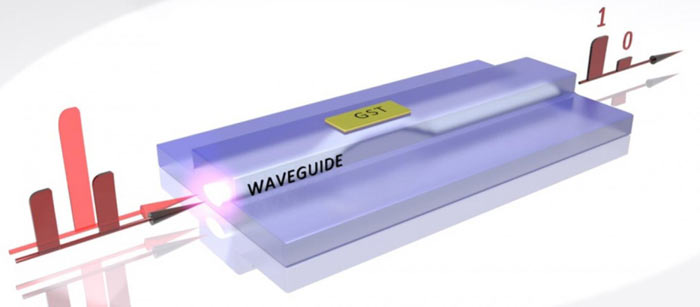A collaboration between researchers from the Karlsruhe Institute of Technology (KIT) and the universities of Münster, Oxford, and Exeter has resulted in the development of "the first all-optical permanent on-chip memory". This could be a key component in optical computing systems as it could eliminate bottlenecks (latencies) involving conversion of optical signals to electrical ones and vice versa. As well as its speed benefits the operation of such memory would require much less energy.
In the future, with quantum computer systems using optical microprocessors, we would optimally be able to eliminate traditional electronic parts which introduce optical-electrical-optical conversion bottlenecks to our systems. Thus researchers have been looking at key system components that can be converted to use optical technology.
The newly developed optical memory is non-volatile, it can store data "for decades" without being powered up. It is capable of storing many bits in a single cell of a billionth of a meter in size. This multi-level memory and can store not just the 0s and 1s of traditional computing but other states too.

In tests, the new memory performed quickly and efficiently. Professor Wolfram Pernice said that "Optical bits can be written at frequencies of up to a gigahertz. This allows for extremely quick data storage by our all-photonic memory". Also the new memory is compatible with conventional optical fibre data transmission and the latest optical processors.
Construction of the optical memory was facilitated by the use of phase change materials which can change their optical properties depending upon the arrangement of their atoms (phase). A KIT blog post informs us that the material chosen was Ge2Sb2Te5 (GST) which can change from crystalline to amorphous (storing data) and from amorphous to crystalline (erasing data) initiated by ultrashort light pulses. Data reading is done with weak light pulses.













